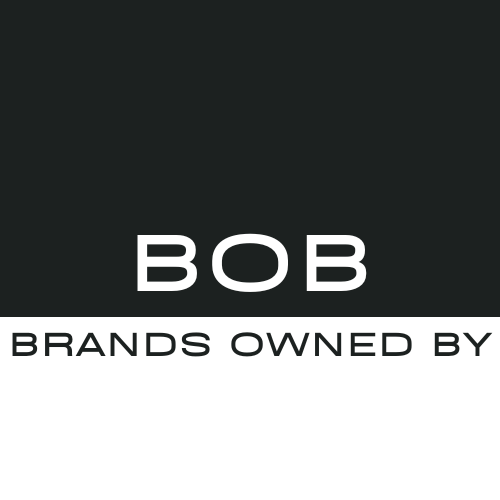West Elm is a household name for anyone who loves modern, stylish furniture with a touch of mid-century charm. Known for its sophisticated home décor and ethically sourced pieces, it has become one of the go-to retailers for contemporary design enthusiasts.
But have you ever wondered who owns West Elm? This blog will answer that question in detail, covering the brand’s history, ownership structure, financial performance, and more.
A Brief History of West Elm
West Elm was founded in 2002 as an affordable, design-focused alternative to premium furniture retailers. Its goal was simple—to provide stylish, modern pieces that fit into the aesthetic tastes of young professionals and urban dwellers.
The first West Elm store was opened in Brooklyn, New York, a trend-setting area that matched the brand’s ethos and appeal perfectly.
By focusing on innovative design, sustainability, and exclusivity through private-label products, West Elm quickly rose through the ranks of popular home furnishing companies.
It has expanded to operate more than 100 retail stores worldwide catering to customers not only in the U.S. but also internationally.
Who Owns West Elm?
West Elm is not a standalone company; it is a part of Williams-Sonoma, Inc., a leading home furnishing and kitchenware retailer in the United States.
Williams-Sonoma, Inc. is a publicly traded company, and its ticker symbol on the New York Stock Exchange (NYSE) is WSM. This makes Williams-Sonoma, Inc. the official owner of West Elm.
The company acquired West Elm early in its history to diversify its portfolio, which also includes other prominent brands like Pottery Barn, PBteen, and Rejuvenation. Williams-Sonoma, Inc. owns West Elm outright and incorporates its revenue, innovations, and operations into the parent company’s global strategy.
Largest Shareholder of Williams-Sonoma, Inc.
Williams-Sonoma, Inc., including its subsidiaries like West Elm, is a publicly traded company, which means it is owned by its shareholders. Typically, institutional investors hold the majority of shares.
According to the latest shareholder information:
- Vanguard Group is the largest shareholder, owning close to 11% of shares. Vanguard, a prominent investment management company, influences the company’s overall financial performance and governance through its significant stake.
- Other major institutional investors include BlackRock and State Street Corporation.
The shares are widely distributed, and no single entity has complete control, making Williams-Sonoma, Inc. a company influenced by a collective of institutional and individual investors.
Major Shareholders of Williams-Sonoma, Inc.
Here is a breakdown of the major shareholders of Williams-Sonoma, Inc., and by extension, West Elm:
1. Vanguard Group
- Ownership: Approximately 11%
- Role: Investment Management Company
- Influence: Vanguard has a significant say in strategic decisions made by the board and influences shareholder votes.
2. BlackRock
- Ownership: Around 9%
- Role: Global Asset Management Firm
- Influence: Known for its large-scale investments, BlackRock plays an important role in the governance of Williams-Sonoma, Inc.
3. State Street Corporation
- Ownership: Close to 5%
- Role: Institutional Investment
- Influence: State Street assists by providing liquidity and advisory services, along with governance oversight.
4. Other Institutional Investors
- Numerous institutional and individual shareholders collectively own the remaining shares, creating a diversified ownership structure.
Who Controls West Elm?
Although Williams-Sonoma, Inc. technically owns West Elm, control over the company’s decisions is exercised by the board of directors and executive leadership at Williams-Sonoma, Inc.
The company’s CEO—Laura Alber—has been instrumental in driving the growth of all sub-brands, including West Elm.
Decision-Making Process
The board and leadership team oversee key decisions about brand strategy, product offerings, and innovation, with input from investor groups.
Major strategic decisions, including West Elm’s focus on sustainability and ethical production practices, are made in alignment with Williams-Sonoma, Inc.’s broader corporate goals.
Annual Revenue and Net Worth
Williams-Sonoma, Inc., as the parent company of West Elm, recorded significant financial achievements in recent years:
Revenue (2024): Approximately $7.751 billion with West Elm contributing significantly due to its popularity among millennial and Gen Z consumers.
Net Worth: Williams-Sonoma, Inc. is valued at over $12 billion encompassing all its brands, including West Elm.
These figures underline the strong financial position of West Elm as part of a larger successful conglomerate.
Market Share and Competitors
West Elm occupies a significant share of the home furnishings market. It is particularly strong in the mid-to-upscale furniture category, known for competing directly with brands like Crate & Barrel and CB2.
Competitors
Crate & Barrel
- Market Share: Estimated at around 20% in upscale home furnishings.
- It focuses on contemporary furniture in a price range similar to West Elm.
Pottery Barn (also owned by Williams-Sonoma, Inc.)
- Market Share: Estimated at 18% with an emphasis on timeless, family-centered designs.
IKEA
Market Share: Over 10% globally in mid-range furniture with a focus on affordability and flat-pack convenience.
Wayfair
- Market Share: Wayfair has an estimated 12% market share in online furniture retail dominating the e-commerce segment.
Brands Owned by West Elm
While West Elm itself is a brand under the Williams-Sonoma umbrella, the company has partnerships and sub-brands that enhance its offerings. Key highlights include:
West Elm Kids
A newly launched line for kids and families that mirrors the main brand’s modern aesthetic.
Contract Furniture
Specializes in creating high-quality furniture for commercial spaces, including hotels and offices.
Although West Elm does not “own” other brands outright, its partnerships with local artisans and exclusive collaborations (e.g., Fair Trade Certified products) have expanded its reach and influence.
What We Can Learn From West Elm
West Elm is more than a furniture brand; it is a prime example of how strong ownership, strategic decisions, and sustainable initiatives can drive loyalty and growth. Backed by Williams-Sonoma, Inc., the brand continues to innovate while staying true to its identity.
FAQs
1. Who are the largest stakeholders of West Elm?
The largest stakeholders are institutional investors like Vanguard Group and BlackRock who hold significant shares in Williams-Sonoma, Inc.
2. Is West Elm a sustainable brand?
Yes, West Elm prides itself on being one of the most sustainable furnishing brands, with over 60% of its products being Fair Trade Certified.
3. How successful is West Elm compared to its competitors?
West Elm has carved out a dominant position in the mid-to-upscale furniture market, competing strongly with Crate & Barrel and CB2 while offering a unique design-forward approach.
4. Does West Elm operate internationally?
Yes, West Elm operates in multiple countries and continues to expand its global outreach.

